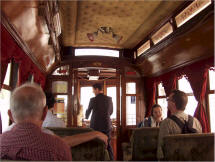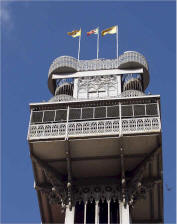|
LISBON CITY SAFARI |
|
Portugal is one of England’s oldest allies and its capital was the centre for overseas exploration, surely a good enough reason for visiting Lisbon, a former Capital of Culture? |
|
Lisbon’s position on the wide mouth of the River Tagus, close to the sea ensured that seafarers from the Middle Ages onwards used the city as a base, with docks and warehouses. Although much of the riverside has been transformed for leisure use some of the warehouses remain as well as maritime stations on the docks from the 20th century passenger trade. Today most seafarers venture no further than the ferries across the river. |
|
The city itself really dates back to the 18th century when it was rebuilt by the Marquis de Pombal after a disastrous earthquake in 1755 which killed about 80,000 and destroyed over 85% of the city. The elaborate city centre buildings were explored including those in the Baixa, the area rebuilt in the 18th century as well as Alfama, the older Moorish area, left untouched by the earthquake. |
|
Aboard a Tramway Museum exhibit |
|
One of the features of the city, set on seven hills, are the elevadors or lifts. As the city is so hilly, short cuts can be taken by these lifts, including the elevador de Santa Justa, erected in the early 20th century by the French Eiffel Company. This is an ornate fantasy in cast iron, giving a fabulous viewpoint. Other interesting transport remains are funiculars, often misleadingly called 'lifts'. The first in the world was opened in Lisbon in 1884 and is still in operation, although now electrically hauled rather than using a water balance system. |
|
Elevador de Santa Justa |
|
Public utilities were also featured, as
usual. Water supply has always been important in this southern part of
Portugal and we saw remains of the system originally built in the
18th century to bring water into the city. |
|
Calatrava's new Oriente Station |
|
Electricity also came early to the city and
we viewed the early 20th century listed power station in
Belem. Also in this area of the city is the Belem Tower, originally
sited on an island in the river. It was built as a defensive lighthouse
to guard the in the 16th century but once the river was
diverted after the 1755 earthquake, it became close to the land. Near by
is the Discoverers’ Monument erected in 1960 to commemorate the 600th
anniversary of the death of King Henry the Navigator and dedicated to
all those who set sail from here to lands afar. |



